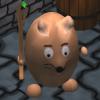Search the Community
Showing results for tags 'babylon.js 2.5 challenge'.
-
Edit 10: New "blog"-post: New post 27.2.2017 Edit 9: New "blog"-post: New post 25.2.2017 Edit 8: New "blog"-post: New post 21.2.2017 Edit 7: Gameplay Video: Video Edit 6: New "blog"-post: New post 8.2.2017 Edit 5: New "blog"-post: New post 1.2.2017 Edit 4: New "blog"-post: New post 21.1.2017 Edit 3: New "blog"-post: New post 14.1.2017 Edit 2: New "blog"-post: New post 6.1.2017 Edit 1: New "blog"-post: New post -- Hi BabylonJS-Community, Last friday I joined the Babylon.js 2.5 challenge. I decided to post my progress here. Maybe this will motivate others to join the challenge and I hope it will keep me motivated to finish the project I came up with. Also there might be some tips or things I find out that might help others. Here is my vision: A cooperative multiplayer action roleplaying game that is real time and is designed for a play session of about 15 minutes. It should offer content to a single player as well as a challenge that is only beatable by three or more players. This way you can just open up the game and try it out, if you like it you can coordinate with friends or people from the html5gamedevs board to beat the multiplayer part. Since I am going to make everything from scratch things will be created as simple as possible. This means: flat shaded low poly blender models. Here is what I have so far: The blue girl is the heroine the players control. The yellow slime is the first enemy, controlled by the server. The slimes idle around, if a player comes too close they begin to follow and attack the player once they are in range. Upon loosing all health the player dies. The green & red highlight at the end is the mouse over effect that is going to be used to indicate targets and if they are friendly or not. Some info on the tech: node.js server (using "ws" for websockets) that controls all gameobjects babylon 2.5 client using the browser webSocket object for communication Communication is done via sending JSON objects over the websocket. Since I struggled a bit putting text on billboards, here is a small playground showing my solution: Nameplate Playground I also ran into a small hickup with the highlight layer, using the it together with cloned meshes: Cloning a mesh does not generate a new unique id. If you add one cloned mesh to the highlight array all clones will be highlighted. The solution I found: Set unique Ids (mesh.id = …) for all cloned meshes. That's it for now. Hopefully I will have more to show next week.




